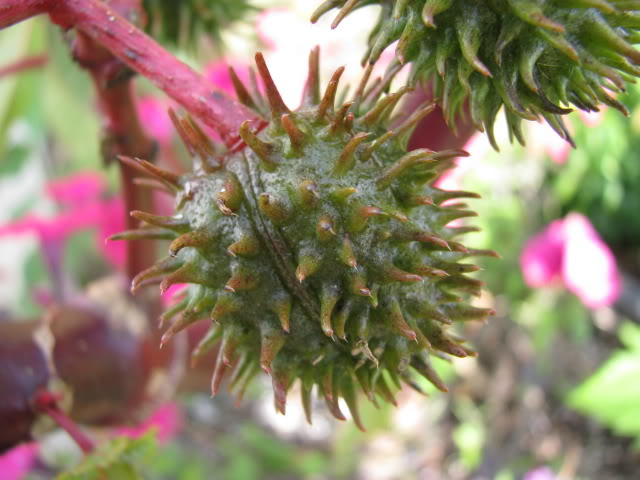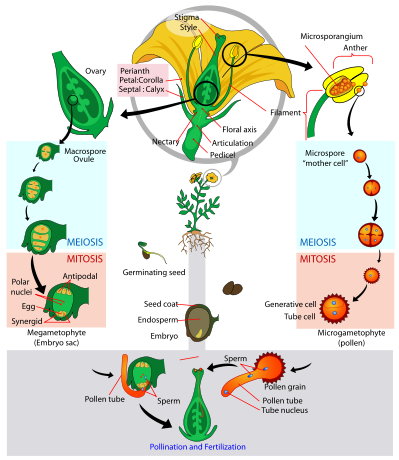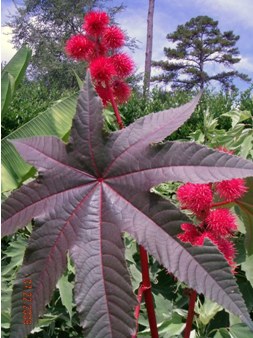Reproduction
Sexual Reproduction
Since the castor bean is an angiosperm it relies on seeds
to reproduce, unlike non-flowering plants that instead use spores
to reproduce. The
flower of the plant is simply a bunch of modified leaves.
The Seed: some unique properties
The germination of the castor bean is extremely similar to the garden bean except that the castor bean stores food in the endosperm. As the stem begins to develop it straightens out and comes out of the ground bringing the seed coat, cotyledons and plummule out of the ground with it. The stored food is then digested and absorbed by the cotyledons. After absorption the nutrients are transported to the growing parts of the plant. The cotyledon becomes green when exposed to light but it doesn’t play an important role in photosynthesis. In comparison the squash’s cotyledons become very important in photosynthesis.
Cross-fertilization is essential to long term survival of any species because it ensures a varied population. Flowering plants have developed many different techniques to ensure that this happens. The first is the separation of the sexual organs. Being that the castor bean plant has both male and female flowers on the same plant, it is monoecious (meaning one house). With there being two different sexes of flower this allows the genetic material of both flowers to be placed into the seed. Another technique used is the specialization of pollination mechanisms. Many plants will specialize their pollination mechanisms adapting them to a specific insect, bird or bat. This specialization of the flower structure ensures cross-pollination.
Want to learn more about reproduction in angiosperms? Click here and explore Professor C.M. Sean Carrington's web page!
Wow, you still want to learn more? Move on to
Interactions!!
Back to Home To Multipleorganisms.net To UW-Lacrosse


